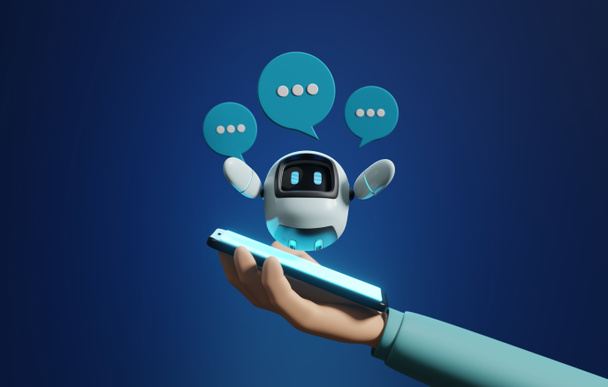Leverage AI and Machine Learning for Content Recommendations








Leverage AI and Machine Learning for Content Recommendations
Personalized content delivery involves tailoring messages, recommendations, and media to align with customer preferences, behaviors, and interactions. By leveraging customer data and adapting to individual needs, businesses can create meaningful experiences that boost engagement, drive conversions, and build loyalty. Here’s a comprehensive examination of how to implement personalized content delivery across channels:
1. Collect and Centralize Customer Data
To personalize effectively, gather and organize data from various sources:
- First-party data: Information directly collected through websites, apps, emails, or surveys, such as purchase history, browsing behavior, or demographic details.
- Second- and third-party data: Data from partners or aggregators to enrich customer profiles.
- Behavioral data: Interactions like clicks, time spent on pages, or content consumed.
- Use a Customer Data Platform (CDP) or a CRM system to create a unified customer view.
2. Segment Audiences by Preferences and Behavior
Divide customers into meaningful groups based on:
- Demographics: Age, gender, location.
- Psychographics: Interests, values, or lifestyle choices.
- Behavioral traits: Purchase frequency, browsing patterns, or engagement levels.
- Engagement stage: New customers, loyal advocates, or at-risk segments.
Segmentation ensures content is relevant and resonates with the intended audience.
3. Leverage AI and Machine Learning for Content Recommendations
- Predictive Analytics: Use algorithms to anticipate what content a customer is likely to engage with based on historical data.
- Recommendation Engines: Suggest products, articles, or media based on past interactions, similar customer preferences, or trending items.
- Example: Netflix suggesting movies based on viewing history or Amazon recommending products based on previous purchases.
4. Customize Content Across Channels
Websites:
- Dynamic homepages: Display personalized banners, product suggestions, or content based on browsing history or location.
- Interactive elements: Offer quizzes or calculators that tailor results to individual responses.
Emails:
- Personalize subject lines, content, and calls-to-action using recipient data (e.g., “John, here’s a special offer just for you”).
- Send triggered campaigns based on actions like cart abandonment, post-purchase, or re-engagement.
Mobile Apps:
- Adjust app interfaces to highlight preferred features or suggest in-app content based on usage patterns.
- Use push notifications for personalized reminders, updates, or promotions.
Social Media:
- Serve ads or posts tailored to a user’s interaction history, interests, or demographic profile.
- Engage users with polls, interactive stories, or UGC (user-generated content) campaigns that align with their preferences.
In-Store (Physical Channels):
- Use customer purchase history to suggest relevant products during checkout.
- Provide personalized service based on loyalty program data.
5. Implement Real-Time Personalization
- Adapt content dynamically based on live customer actions, such as showing related products when a customer views an item.
- Use location-based targeting to deliver relevant offers or content (e.g., promoting store-specific discounts for nearby customers).
6. Employ Content Variability Techniques
- A/B Testing: Experiment with different content variations to see what resonates best with different segments.
- Modular Content Creation: Build adaptable content blocks that can be rearranged or modified for different audiences or channels.
7. Personalize with Contextual Data
Integrate contextual factors to refine personalization:
- Time of day: Promote breakfast items in the morning or evening deals after work hours.
- Seasonality: Highlight relevant products or services during specific holidays or events.
- Device type: Optimize content layout and delivery for desktops, tablets, or smartphones.
8. Ensure Consistency Across Channels
- Synchronize personalization efforts so that customers receive consistent messaging and experiences regardless of the channel (website, app, email, etc.).
- For example, if a customer adds an item to their cart on a mobile app, ensure the same item appears in their cart when they access your website.
9. Monitor and Adapt Based on Feedback
- Use engagement metrics (clicks, time spent, shares, conversions) to refine personalization strategies.
- Incorporate direct customer feedback through surveys, reviews, or chat interactions to understand preferences better.
10. Focus on Privacy and Transparency
- Clearly communicate how customer data is used to enhance personalization.
- Provide opt-in/opt-out options and comply with data privacy regulations like GDPR or CCPA.
Examples of Personalized Content Delivery in Action
- E-commerce: Showing “related items” or “frequently bought together” products based on a customer’s purchase.
- Media Streaming: Suggesting content based on viewing patterns, as Netflix and Spotify do.
- Travel Industry: Offering vacation packages based on recent searches or past bookings.
- Healthcare Apps: Delivering tailored wellness tips or exercise plans based on user input.
Benefits of Personalized Content Delivery
- Enhanced Engagement: Relevant content captures attention and encourages interaction.
- Higher Conversion Rates: Tailored messaging leads to more purchases, sign-ups, or downloads.
- Stronger Customer Loyalty: Personalized experiences make customers feel valued, fostering long-term relationships.
- Improved ROI: Efficient targeting reduces wasted marketing efforts and increases returns.
By tailoring content delivery to customer preferences and interactions across channels, businesses can transform one-size-fits-all marketing into an engaging and customer-centric experience.

